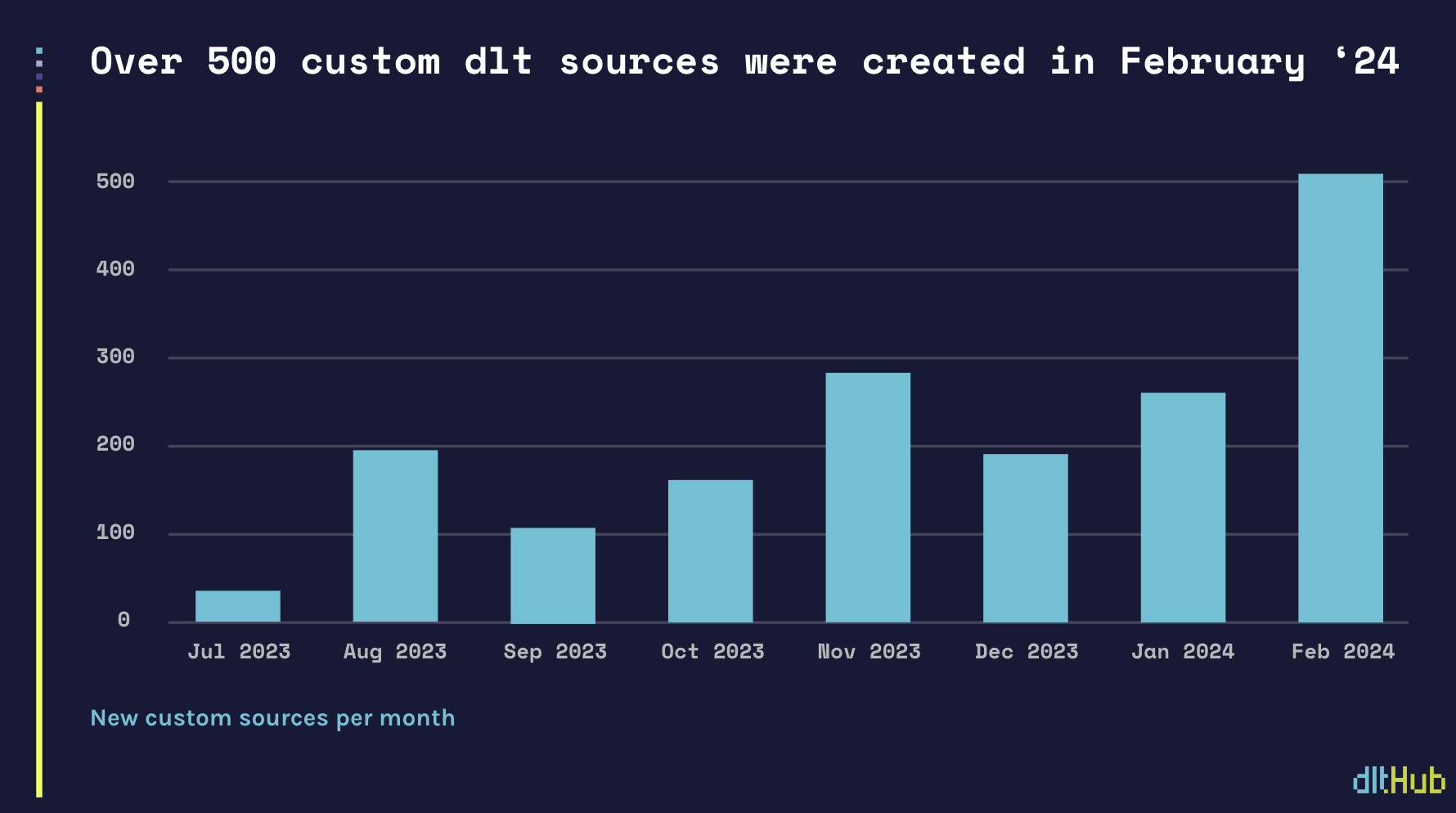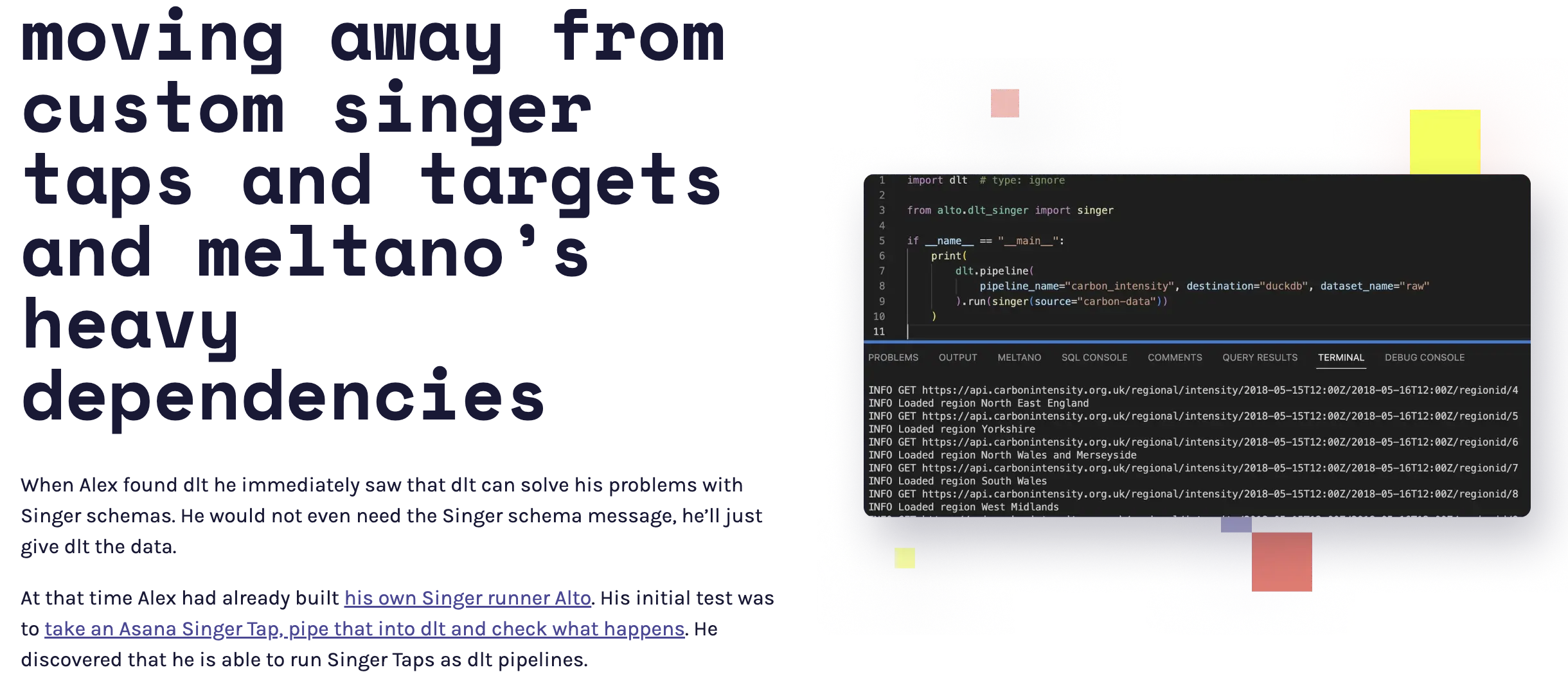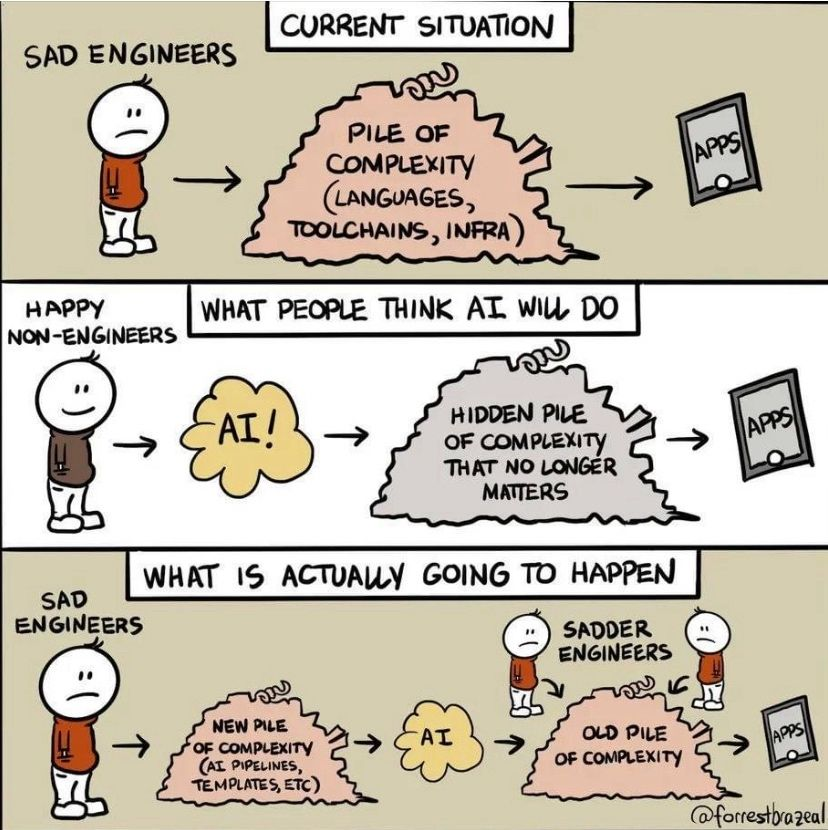Celebrating over 500 ad hoc custom sources written by the dlt community in February
Today it is easier to pip install dlt and write a custom source than to setup and configure a traditional ETL platform.
The wider community is increasingly noticing these benefits. In February the community wrote over 500 dlt custom sources. Last week we crossed 2000 dlt total custom sources created since we launched dlt last summer.

A custom dlt source is something new for our industry. With dlt we automated the majority of the work data engineers tasks that are usually done in traditional ETL platforms. Hence, creating an ad hoc dlt pipeline and source is a dramatically simpler. Maintaining a custom dlt source in production is relatively easy as most of the common pipeline maintenance issues are handled.
Today dlt users pick dlt because it is the fastest way to create a dataset. As we frequently hear it from all of you “dlt is pip install and go”. This is in line with our mission to make this next generation of Python users autonomous when they create and use data in their organizations.
How to get to 50,000 sources: let’s remove the dependency on source catalogs and move forward to ad hoc code
We think that “Pip install ETLs” or “EL as code” tools such as dlt are ushering a new era of ad hoc code. ad hoc code allows for automation and customization of very specific tasks.
Most of the market today is educated by Saas ETLs on the value of “source”/”connector” catalogs. The core is a short-tail catalog market of +-20 sources (product database replication, some popular CRMs and ads APIs) with the highest profit margins and intense competition among vendors. The long-tail source catalog market, depending on the vendor, is usually up to 400 sources, with much smaller support.
We think that source catalogs will become more and more irrelevant in the era of LLMs and ad hoc code. “EL as code” allows users to work with source catalog. From the beginning the dlt community has been writing wrappers for taps/connectors from other vendors, usually to migrate to a dlt pipeline at some point, as we documented in the customer story how Harness adopted dlt.

Even for short-tail, high quality catalog sources “EL as code” allows for fixes of hidden gotchas and customisation that makes data pipelines production-ready.
We also believe that these are all early steps in “EL as code”. Huggingface hosts over 116k datasets as of March ‘24. We at dltHub think that the ‘real’ Pythonic ETL market is a market of 100k of APIs and millions of datasets.
dlt has been built for humans and LLMs from the get go and this will make coding data pipelines even faster
Since the inception of dlt, we have believed that the adoption dltamong the next generation of Python users will depend on its compatibility with code generation tools, including Codex, ChatGPT, and any new tools that emerge on the market..
We have not only been building dlt for humans, but also LLMs.
Back in March ‘23 we released dlt init as the simplest way to add a pipeline/initialize a project in dlt. We rebuilt the dlt library in such a way that it performs well with LLMs. At the end of May ‘23 we opened up our dltHub Slack to the broader community.
Back in June ‘23 we released a proof of concept of the 'dlt init' extension that can generate dlt pipelines from an OpenAPI specification. As we said at that time, if you build APIs, for example with FastAPI, you can, thanks to the OpenAPI spec, automatically generate a Python client and give it to your users. If you have 3min time watch how a demo Marcin generates such a pipeline from the OpenAPI spec using the Pokemon API in this Loom. This demo took things a step further and enables users to generate advanced dlt pipelines that, in essence, convert your API into a live dataset.
However, it takes a long time to go from a LLM PoC to production-grade code. We know much of our user base is already using ChatPGT and comparable tools to generate sources. We hear our community's excitement about the promise of LLMs for this task. The automation promise is in both in building and configuring pipelines. Anything seems possible, but if any of you have played around this task with ChatPGT - usually the results are janky. Along these lines in the last couple of months we have been dog fooding the PoC that can generate dlt pipelines from an OpenAPI specification.

https://twitter.com/xatkit/status/1763973816798138370
You can read a case study on how our solution engineer Violetta used an iterated version of the PoC to generate a production-grade Chargebee dlt within hours instead of 2,3 days here.
We think that at this stage we are a few weeks away from releasing our next product that makes coding data pipelines faster than renting connector catalog: a dlt code generation tool that allows dlt users create datasets from the REST API in the coming weeks.
